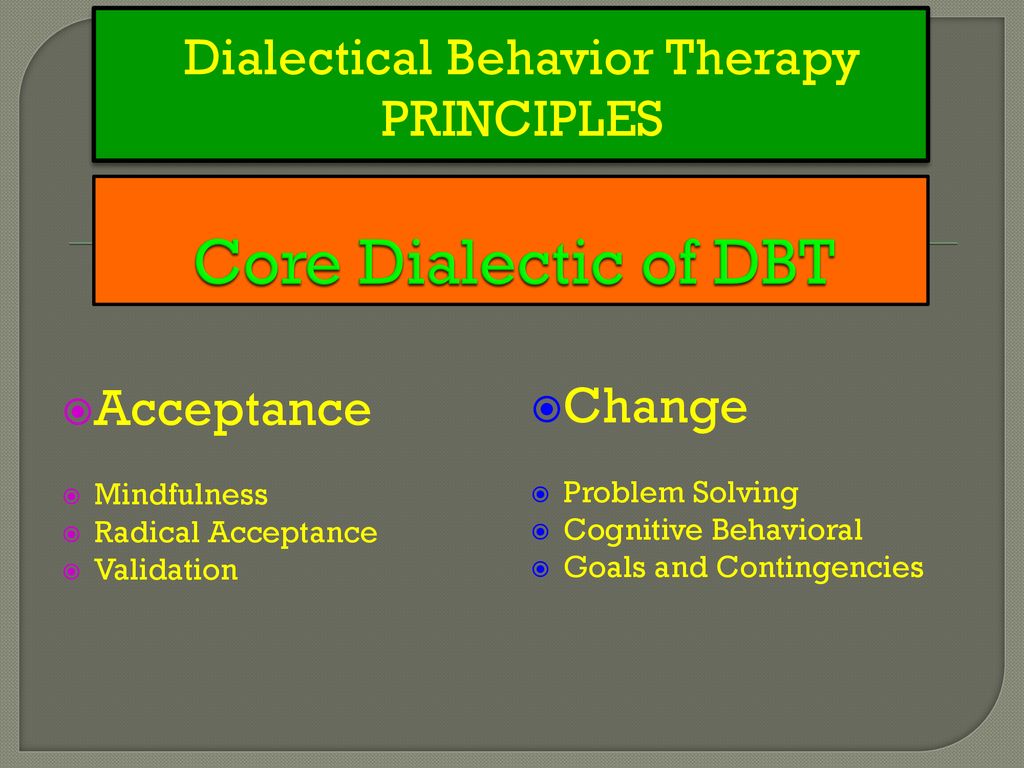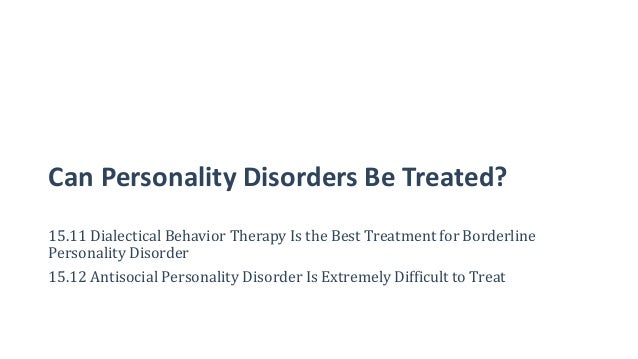Evaluation of behavioural skills training for teaching abduction-prevention skills to young children. Journal of Applied Behavior Analysis, 38, 67-78. Miles, N.I., & Wilder, D.A. The effects of behavioral skills training on caregiver implementation of guided compliance. Journal of Applied Behavior Analysis, 42(2), 405-410. Dialectical Behavior Therapy. Course Description: The course consists of 10 days of training in four parts, over six-eight months, providing up to 60 CE credits. This comprehensive DBT training will address all 5 components of DBT and help you to develop a DBT program in your work setting.
At the end of the training, each Nurse must complete and sign the provided form to record the number of credits claimed. Keep one copy & return the other copy to Behavioral Tech. Behavioral Tech is accredited by the Accreditation Council for Continuing Medical Education to provide continuing medical education for physicians. Cognitive behavioral therapy tries to identify and change negative thinking patterns and pushes for positive behavioral changes. DBT may be used to treat suicidal and other self-destructive.
By Zainab Fazal, M.ADS, BCBA
bSci21 Contributing Writer
On June 22, 2015, I received a phone call from a staff at a local residential home serving adults with developmental disabilities. With a lot of excitement, she asked if I watched NBC Dateline the night before. Before I could answer, in even more excitement, she said, “that guy did that strategy you were talking about in class!”
Let me give you a little insight into what she was talking about. She was referring to the segment on NBC Dateline called “My kid would never do that: gun safety”, and the guy was Dr. Raymond Miltenberger.You can check out the segment here.
If you teach anyone, anything, behavior analysis has a secret to share with you. It’s the strategy the staff was talking about – Behavior Skills Training (BST). It is a method to teach students, staff, parents, and anyone else you are teaching a new skill. Dr. Miltenberger defines BST as “a procedure consisting of instruction, modeling, behavioral rehearsal, and feedback that is used to teach new behaviors or skills” (2004, p. 558). And that’s exactly what it is, a 4-step teaching strategy that works!
BST teaches a person what to do — that is, what behaviors to engage in under a particular circumstance.It allows for practice within the program so that the person can become fluent with the skills.It is an effective train-the-trainer procedure. And perhaps most importantly, can be individualized to each person. Sounds pretty good, doesn’t it?
Let’s break down each of the steps:
Instruction – Provide a description of the skill, its importance or rationale, and when and when not to use the skill. Repeat this step as necessary.
Modeling – Show your participant how to perform the skill. In-vivo modeling is recommended.
Rehearsal – Practice, practice, and practice! Allow the participant opportunities to practice the skill. Recent research suggests that participants should be able to practice in-situ. The trainer should record data on correct and incorrect responding during this step.
Feedback – The trainer should provide positive praise for correct responding and some form of corrective feedback for incorrect responses.
Some requirements before you can implement a BST program include: the person receiving the training must have the pre-requisite skills required for the behaviors you are teaching, the skill must include a chain of behaviors (a number of skills), and you must be able to role-play or video model the skills.
In a Registered Behavior Technician training course I was providing, I used BST to teach various skills to participants. Any skill I was teaching that met the afore-mentioned requirements I taught using BST. Based on the feedback forms from eight cohorts, participants reported that they enjoyed and learned the most when they got to practice the skills being taught, and got immediate feedback.
Here’s an example of how it was used in the training. The skill was implementing preference assessments with clients.
Instructions were provided on why preference assessments are done, when and with whom to do them, how to use the data sheet, the materials required, and how to complete the assessment.

I modeled completing a preference assessment, using one of the course participants as my “client.”
Participants paired up and practiced administering the preference assessment with their colleagues.Participants were able to practice the skill as each preference assessment included 30 trials!
I went to each group and provided feedback on what each person was doing correctly and incorrectly.
What have been your experiences with Behavior Skills Training? Let us know in the comments below. Also, be sure to subscribe to bSci21 via email to receive the latest articles directly to your inbox!
Recommended Readings:
Johnson, B.M., Miltenberger, R.G., Egemo-Helm, K., Jostad, C. J., Flessner, C., & Gatheridge, B. (2005). Evaluation of behavioural skills training for teaching abduction-prevention skills to young children. Journal of Applied Behavior Analysis, 38, 67-78.
Miles, N.I., & Wilder, D.A. (2009). The effects of behavioral skills trainingon caregiver implementation of guided compliance. Journal of Applied Behavior Analysis, 42(2), 405-410.
Miltenberger, R. (2004). Behaviour Modification: principals and procedure (3rd ed.) Belmont, CA. Wadsworth Publishing.

What Is Dialectical Behavioral Therapy

Miltenberger, R.G., Flessner, C., Batheridge, B., Johnson, B., Satterlund, M., & Egemo, K. (2004). Evaluation of behavioural skills training procedures to prevent gun play in children. Journal of Applied Behavior Analysis, 37, 513-516.
11dialectical Behavioral Training Programs
Steward, K.K., Carr, J.E., & LeBlanc, L.A. (2007). Evaluation of family-implemented behavioural skills training for teaching social skills to a child with asperger’s disorder. Clinical Case Studies, 6, 252-262.
Zainab Fazal, M.ADS, BCBA, began her career in the developmental disabilities field in 2002, and has dedicated her clinical work and research in the area of Applied Behaviour Analysis (ABA). She has worked for many years in assessing and developing comprehensive programs plans for children, youth, and adults with Autism Spectrum Disorders (ASD), learning disabilities, other developmental disabilities, behavioural challenges and mental health issues. Her recent work includes training front-line staff and teachers to use ABA in therapeutic and school settings, and has successfully trained individuals for the Registered Behaviour Technician credential with the Behaviour Analyst Certification Board. She is also an adjunct professor at Seneca College teaching ABA courses in the Behavioural Sciences program. Zainab is the founder and director of Phoenix Behaviour Services, a private practice in Toronto, Canada. You can follow her on twitter @Phoenix_ABA and reach her at zainab@pbxs.ca.
Dialectical Behavior Therapy (DBT) is one of the fastest growing approaches — because it works! It harnesses the power of CBT and mindfulness in a strategic way that gets results.
And now you can learn how to share and adapt the evidence-based DBT model for children and adolescents in practical and engaging ways — tailored to their unique developmental needs.
Join DBT expert Jean Eich, Psy.D, LP, to discover how DBT can help the kids you work with manage out of control behaviors and emotional regulation deficits that can often be associated with ADHD, attachment disorder, ODD, eating disorders, anxiety, depression, substance abuse and more...
11dialectical Behavioral Training Center
You'll get step by step instruction on how to use mindfulness strategies and techniques that will help young clients observe and identify moments of distress, master skills to manage their emotions and behaviors, and develop communication strategies to talk about how they're feeling so they can maintain healthy, positive relationships.
11dialectical Behavioral Training Login
This course will help make even your most challenging child and adolescent clients easier to treat by showing you step by step how you can use DBT in a fluid and flexible way specific to your clients — so you can help transform treatment outcomes and improve the health, well-being and happiness of today's youth.
